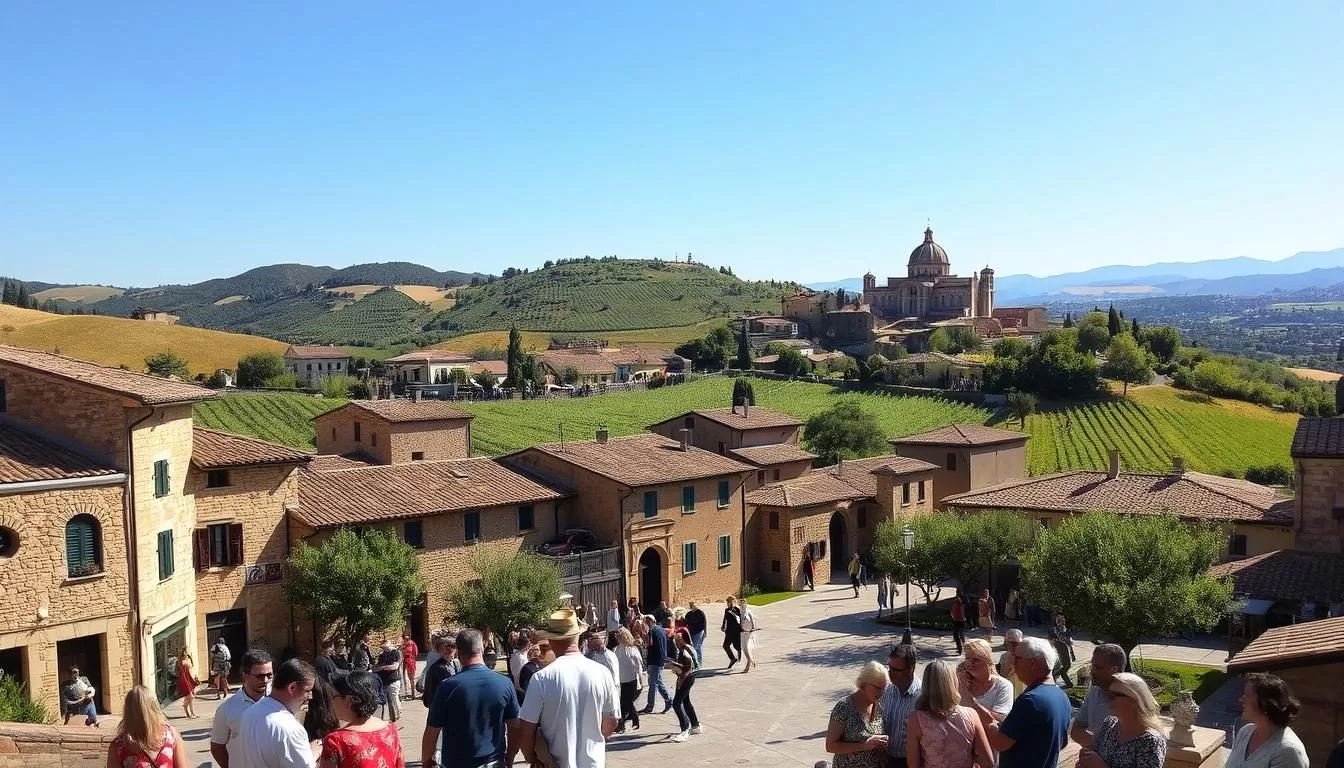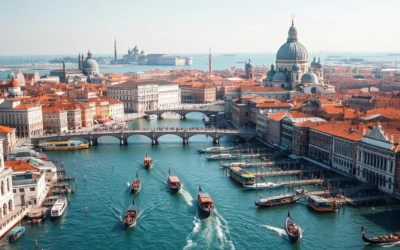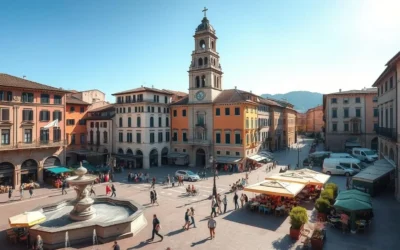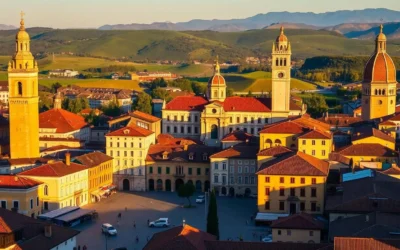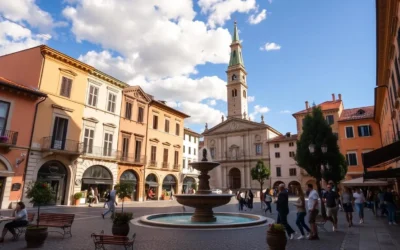When you think of Italy, the Italian language likely comes to mind. It’s the official language of the country, used in government, education, and daily life. With roots in medieval Tuscan, it has evolved into a standardized form recognized globally.
Italian serves as a unifying force among diverse regional dialects. While it’s the primary language spoken, there are also 12 recognized minority languages, reflecting Italy’s rich cultural diversity.
From public administration to court procedures, the Italian official language plays a vital role. It’s not just a means of communication but a cornerstone of national identity and heritage.
Overview of Italy’s Linguistic Heritage
Italy’s linguistic roots stretch back centuries, shaped by a mix of ancient influences and regional diversity. From the days of Vulgar Latin to the present, the country’s language landscape has evolved into a rich tapestry of dialects and minority tongues.
Historical Background and Evolution
The origins of Italy’s language can be traced to Vulgar Latin, which spread across the region during the Roman Empire. Over time, local dialects emerged, creating a continuum of linguistic variations.
Historical shifts, such as invasions and cultural exchanges, further shaped these dialects. For example, Sardinian, with its roots in ancient Latin, remains one of the largest indigenous language groups, spoken by over a million people.
Modern Diversity Across Regions
Today, the country’s linguistic diversity is evident in its regional dialects. While Italian is the primary language, minority tongues like Friulian and Ladin thrive in specific areas.
Immigration has also added to this diversity, with over a million speakers of Romanian and other foreign languages contributing to the modern linguistic mosaic.
Official Status of the Italian Language
The Italian language holds a unique position in the country’s legal and cultural framework. It is the primary medium for government, education, and judicial proceedings. This status is reinforced by constitutional and legal measures that ensure its dominance while protecting linguistic diversity.
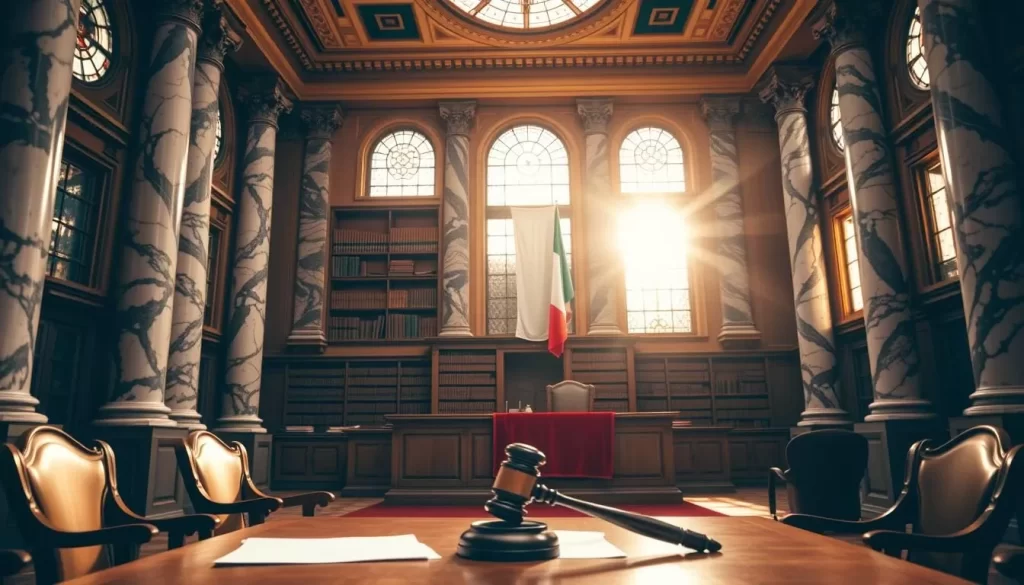
Legal Framework and Government Measures
The Italian Constitution establishes Italian as the national language. Article 6 specifically safeguards the rights of linguistic minorities, ensuring their cultural and linguistic heritage is preserved. This dual approach balances the promotion of Italian with the protection of minority tongues.
Law 482/1999 further reinforces this by recognizing 12 minority languages. These include Sardinian, Friulian, and Ladin, spoken by over a million people combined. The law ensures these languages are taught in schools and used in local administration.
“The protection of linguistic minorities is not just a legal obligation but a cultural necessity.”
In regions like the Aosta Valley, special statutes grant French equal status with Italian. This ensures that every person in the region can access services in their preferred language. Such measures highlight the country’s commitment to linguistic diversity.
| Region | Protected Language | Legal Basis |
|---|---|---|
| Aosta Valley | French | Regional Statute |
| South Tyrol | German | Autonomy Statute |
| Sardinia | Sardinian | Law 482/1999 |
Treaty-based protections, such as the European Charter for Regional or Minority Languages, also play a role. These frameworks ensure that minority languages thrive alongside Italian, enriching the nation’s cultural tapestry.
The Evolution of Standard Italian
The journey of Standard Italian is a fascinating tale of literary brilliance and cultural unity. It began with the influence of great writers who transformed regional dialects into a cohesive language. This evolution played a key role in unifying diverse groups across the country.
Literary Pioneers and Dante’s Influence
Dante Alighieri is often credited as the father of the Italian language. His masterpiece, The Divine Comedy, showcased the beauty of the Florentine dialect. This work proved that the vernacular could rival Latin in literary merit.
Other writers like Petrarch and Boccaccio also contributed significantly. Their works helped establish the Tuscan dialect as the foundation for modern Italian. This literary movement bridged gaps between different groups and regions.
Standardization and Cultural Unification
The 16th century marked a turning point with efforts to standardize the language. Institutions like the Accademia della Crusca played a vital role in this process. They focused on preserving the purity of Italian while adapting it for modern use.
By the 19th century, the unification of the country solidified Italian as the national language. This move fostered a sense of identity among diverse groups and regions. It also paved the way for increased literacy and cultural cohesion.
“Language is the road map of a culture. It tells you where its people come from and where they are going.”
Today, Standard Italian stands as a testament to the power of literature and cultural unity. Its evolution reflects the rich history and diversity of the nation.
Regional Languages: More Than Dialects?
Regional languages in Italy are often misunderstood as mere dialects, but they hold a deeper significance. These languages are full linguistic systems with their own distinct identities, rooted in various provinces and communities. They play a vital role in shaping local identity and cultural heritage.
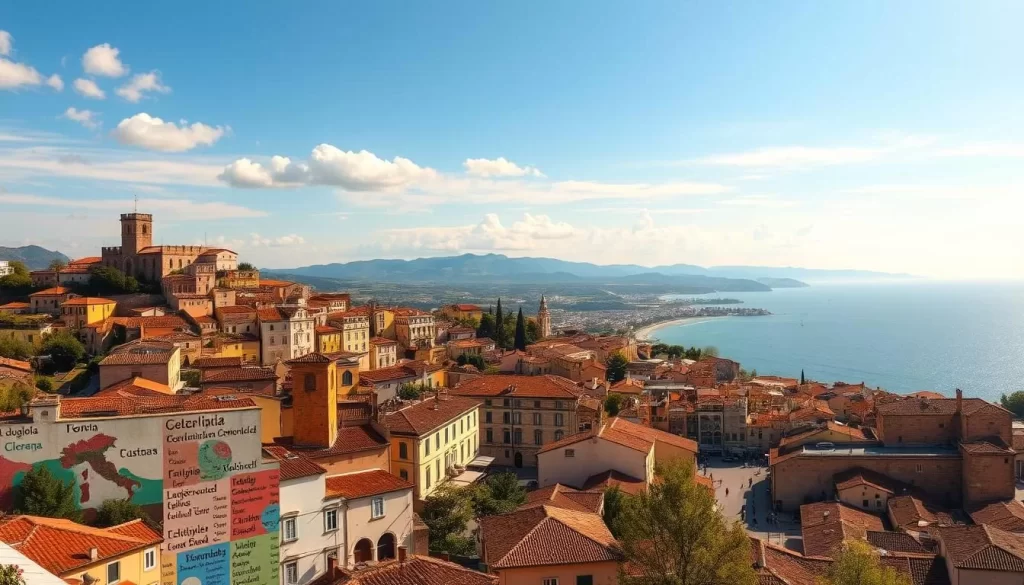
Defining Regional Variations
Regional languages are not just variations of standard Italian. They have unique grammatical structures, vocabularies, and pronunciations. For example, the Venetian dialect is spoken by over 4 million people in Northern Italy, showcasing its widespread use.
Another example is the Sicilian dialect, one of the oldest Romance languages still in use today. It reflects influences from Latin, Arabic, and Greek, highlighting its rich historical background.
The Role of Local Identity
These languages are deeply tied to local identity. In many communities, they are a source of pride and a way to preserve cultural traditions. For instance, 14% of the population uses their regional language instead of standard Italian in daily life.
Preserving these languages is crucial. They offer a unique window into the history and culture of different provinces. Efforts to maintain them ensure that future generations can connect with their roots.
“Language is the soul of a community, carrying its history and identity.”
Understanding regional languages helps you appreciate the diversity within the population. They are more than just dialects—they are living expressions of local culture and heritage.
Italy: Official and widely spoken languages
Standard Italian serves as the primary communication tool across the nation, while regional languages add depth to daily interactions. This duality reflects the country’s rich linguistic heritage and cultural diversity.
Italian is the most widely used language spoken, with over 65 million native speakers. It acts as a unifying force, bridging gaps between different regions and communities. However, many people are bilingual, seamlessly switching between Standard Italian and their local dialects.
About 35% of the population also speaks English, making it the most common foreign language. French and Spanish follow, spoken by 16% and 11% of people, respectively. These languages highlight the country’s openness to global influences.
Regional languages, such as Sardinian, are spoken by over a million person group, preserving local traditions and identities. These languages thrive alongside Standard Italian, creating a vibrant linguistic mosaic.
Educational and media policies play a key role in promoting Standard Italian. Schools teach it as the primary language, while regional dialects are often introduced as part of cultural studies. This approach ensures that everyone can communicate effectively while celebrating their heritage.
“Language is not just a tool for communication; it’s a bridge to understanding culture and identity.”
Understanding the dynamics between Standard Italian and regional languages helps you appreciate the country’s linguistic richness. It’s a testament to how language can both unify and celebrate diversity.
Historical Linguistic Minorities in Italy
Italy’s linguistic landscape is enriched by its historical minority groups, each contributing to the nation’s cultural mosaic. These groups have preserved their unique languages, reflecting centuries of tradition and identity.
Recognized Minority Groups
Twelve historical linguistic minorities are officially recognized, including Albanian, Catalan, and Sardinian. Each group has a distinct cultural and linguistic heritage. For example, the German-speaking community in Val d’Aosta represents a significant minority.
Griko, a variant of Greek, is spoken in Salento, showcasing the presence of long-established Greek communities. These languages are not just regional dialects but full linguistic systems with their own grammatical rules and vocabularies.
Legal Protection and Cultural Rights
The Italian Constitution ensures the protection of these minority languages. Articles 2, 3, 6, and 8 provide legal safeguards, allowing their use in public and educational settings.
Bilingual public signs and road markers are common in areas where these languages are spoken. This practice enhances local toponymy and cultural identity. Individuals also have the right to use historical names that were Italianised, reflecting the cultural significance of these languages.
“Protecting minority languages is not just about preserving words; it’s about safeguarding identity and heritage.”
Here’s a breakdown of some recognized minority languages and their speaker populations:
| Language | Region | Speakers |
|---|---|---|
| Sardinian | Sardinia | 1 million |
| Friulian | Friuli-Venezia Giulia | 600,000 |
| Ladin | Bolzano, Trento, Belluno | 30,000 |
| Slovene | Trieste, Gorizia | 60,000 |
These measures ensure that minority languages thrive alongside Italian, enriching the nation’s cultural tapestry.
Regional Recognition and Protection
In regions like Aosta Valley and South Tyrol, language protection measures set a global standard. These areas demonstrate how regional languages thrive alongside Italian, enriching cultural identity and fostering unity.
The Aosta Valley, for instance, grants French equal status with Italian. This ensures that public services, education, and signage are bilingual. Such measures highlight the region’s commitment to preserving its linguistic heritage.
Case Studies from Aosta Valley and South Tyrol
South Tyrol is another standout example. Here, German is widely spoken and enjoys legal protection. Bilingual education policies ensure that students learn both Italian and German, fostering a sense of dual identity.
Romance languages like Ladin also play a significant role in these regions. Ladin, spoken in parts of South Tyrol, is protected by regional laws. This ensures its use in schools, media, and public administration.
Key legal measures include:
- Bilingual signage in public spaces.
- Education policies promoting regional languages.
- Regional legislation ensuring equal status for Italian and minority languages.
“Language protection is not just about words; it’s about preserving the soul of a community.”
These efforts ensure that regional languages remain vibrant and relevant. They also serve as a model for other regions aiming to balance linguistic diversity with national unity.
Languages Brought by Immigration
Immigration has introduced a vibrant mix of languages, reshaping the linguistic fabric of the country. These languages add depth to the existing diversity, creating a rich mosaic of communication styles. From Arabic to Chinese, immigrant communities bring their native tongues, enriching the cultural landscape.
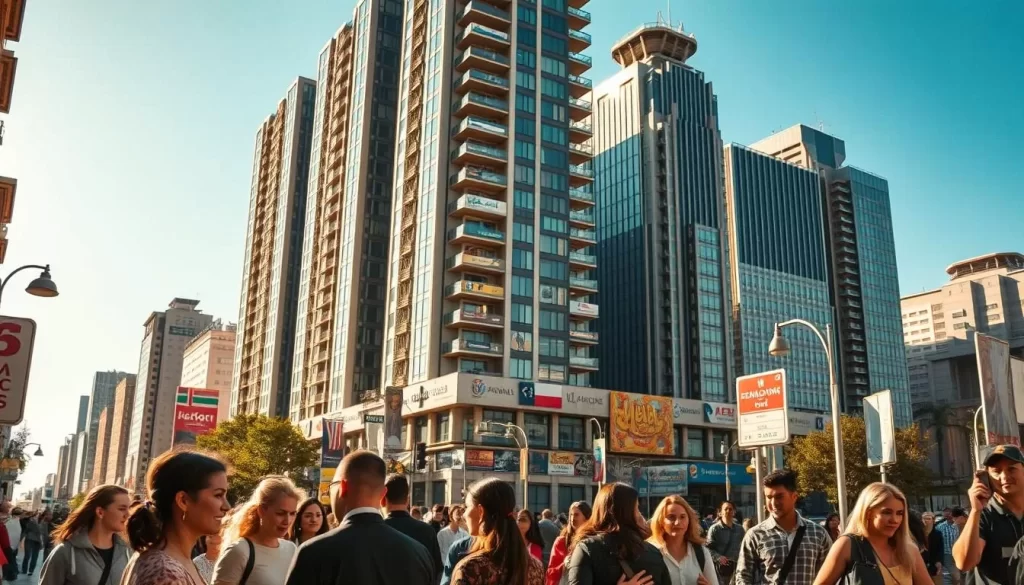
Diverse Immigrant Language Communities
In Southern Italy, immigrant languages like Arabic and Romanian are increasingly common. These languages reflect the growing number of people moving to the region for work and opportunity. For example, over 500,000 people speak Romanian, making it one of the most widely used immigrant languages.
Second-generation immigrants play a key role in maintaining these languages. They often grow up bilingual, speaking both their family’s native tongue and Italian. This dual-language ability strengthens multicultural ties and fosters understanding.
Impact on Local Communication
Immigrant languages influence daily communication in many ways. In urban areas, you’ll hear a mix of Italian and other languages in markets, schools, and workplaces. This blending of languages creates a unique linguistic environment.
In some cases, new dialects emerge, driven by younger generations. These dialects simplify and streamline standard languages, creating fresh forms of expression. This linguistic evolution driven by younger generations highlights the dynamic nature of language in multicultural societies.
Here’s a breakdown of some prominent immigrant languages and their speaker numbers:
| Language | Region | Speakers |
|---|---|---|
| Romanian | Southern Italy | 500,000 |
| Arabic | Urban Centers | 400,000 |
| Chinese | Major Cities | 300,000 |
| Albanian | Various Regions | 200,000 |
These languages are also spoken in schools and community centers, ensuring their continued use. This practice helps preserve cultural heritage while promoting inclusivity.
“Language is a bridge that connects cultures, fostering unity in diversity.”
Understanding the role of immigrant languages helps you appreciate the evolving linguistic landscape. It’s a testament to how immigration shapes communication and culture in meaningful ways.
Preservation Efforts for Endangered Languages
Preserving endangered languages is a global effort that highlights the importance of cultural heritage. Across the world, organizations like UNESCO and national authorities are working to protect these languages from extinction. In Italy, several minority languages are at risk, but initiatives are in place to ensure their survival.
UNESCO and National Initiatives
UNESCO plays a vital role in promoting linguistic diversity. It supports projects that document and revitalize endangered languages, ensuring they remain a part of our shared human heritage. In Italy, programs focus on education, funding, and community engagement to preserve languages like Sardinian and Ladin.
Here are some key efforts:
- Educational programs in schools to teach minority languages.
- Funding for community projects that celebrate linguistic heritage.
- Documentation of endangered languages through audio and video recordings.
For example, the Ladin language, spoken by only a few hundred people in Italy’s Fassa Valley, has seen success through mobile apps featuring illustrated fairytales and lullabies. These tools help younger generations connect with their linguistic roots.
“Language is the soul of a culture, and preserving it ensures that future generations can understand their heritage.”
National initiatives also play a crucial role. Law 482/1999 recognizes 12 minority languages, ensuring their use in education and public administration. This legal framework helps protect languages that are integral to local identity.
Globally, over 7,000 languages exist, but more than 40% are in danger of disappearing. Efforts like those in Italy show how targeted initiatives can make a difference. For more on the fight to preserve endangered languages, visit this resource.
By combining global and local efforts, we can ensure that endangered languages continue to thrive. These initiatives not only preserve words but also the stories, traditions, and identities they carry.
Languages in Daily Life: Regional vs. Standard
Everyday communication often blends Standard Italian with regional dialects, creating a unique linguistic experience. In small towns, local languages play a vital role in preserving cultural identity. Many residents speak a second language based on their traditions, adding depth to daily interactions.
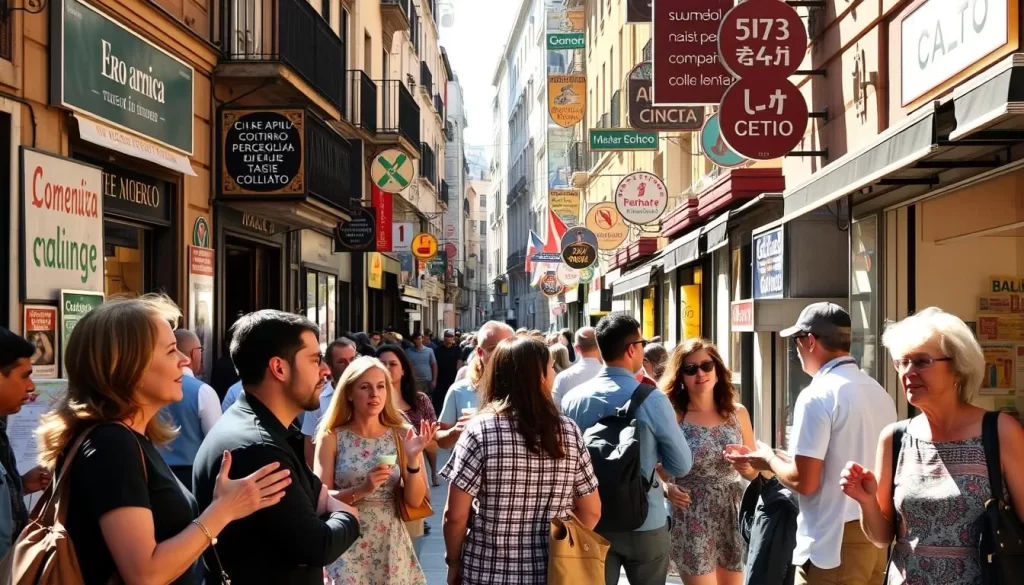
In public services, you’ll notice a mix of languages. For example, in the Aosta Valley, French is used alongside Italian. This bilingual approach ensures everyone can access essential services in their preferred language.
Family settings also showcase this linguistic diversity. Parents often teach their children both Standard Italian and the local dialect. This practice helps younger generations connect with their heritage while staying fluent in the national language.
Here’s how language choices vary across regions:
- In Rome, Romanesco is widely spoken, especially in informal settings.
- Neapolitan thrives in cultural contexts, like TV shows and music.
- In other areas, like the small village of Issine, rare dialects like töitschu are still used by older generations.
“Language is more than words; it’s a bridge to understanding culture and community.”
Understanding these dynamics helps you appreciate the richness of daily communication. It’s a testament to how language can both unify and celebrate diversity.
Cultural Impact of Multilingualism
Multilingualism weaves a vibrant tapestry into cultural festivals and traditions. Across regions, historical languages like Vulgar Latin leave their mark, enriching modern celebrations. Elements of Franco-Provençal also play a significant role, shaping regional expressions and fostering inclusivity.
Festivals and Traditions
Local celebrations often reflect the linguistic diversity of their communities. For example, in the Aosta Valley, Franco-Provençal influences are evident in traditional songs and dances. These events highlight the cultural pride tied to regional languages.
In Sardinia, festivals like Sa Sartiglia showcase the enduring legacy of Vulgar Latin. Participants wear costumes and perform rituals that trace back to ancient traditions. Such events serve as a bridge between the past and present.
Historical Influences
The roots of many celebrations lie in historical languages. For instance, the Carnival of Ivrea incorporates elements from Franco-Provençal, blending them with modern Italian. This fusion creates a unique cultural experience.
Similarly, the Palio di Siena draws on traditions influenced by Vulgar Latin. The event’s rituals and symbols reflect centuries of linguistic and cultural evolution. It’s a testament to how language shapes identity.
Here’s a look at some festivals where multilingualism plays a key role:
| Festival | Region | Language Influence |
|---|---|---|
| Sa Sartiglia | Sardinia | Vulgar Latin |
| Carnival of Ivrea | Piedmont | Franco-Provençal |
| Palio di Siena | Tuscany | Vulgar Latin |
“Language is the thread that stitches together the fabric of culture, preserving traditions for future generations.”
Multilingual practices not only celebrate diversity but also strengthen community bonds. They ensure that cultural heritage remains alive, even as societies evolve. For more on how multilingualism shapes cultural identity, explore this resource.
Italian Language on the Global Stage
The Italian language extends its influence far beyond its borders, playing a significant role on the global stage. With over 65 million native speakers and 3.1 million additional second-language speakers, it ranks as the 21st most spoken language worldwide. This linguistic reach highlights its importance in international communication and culture.
Role in International Organizations
Italian holds official status in several international organizations, including the European Union. It is the third-most-widely spoken native language in the EU, representing 13% of the population. Additionally, 13.4 million EU citizens speak it as a second language, further solidifying its role in global diplomacy.
Its presence in organizations like the United Nations and UNESCO underscores its cultural and diplomatic significance. This global recognition reflects the variety of contexts where Italian is used, from legal documents to cultural exchanges.
Italian as an Official Language in Other Countries
Beyond its native land, Italian is an official language in four countries: San Marino, Switzerland, Vatican City, and Italy itself. In Switzerland, it is the third most spoken language, with Lugano being the largest Italian-speaking city outside Italy.
Italian also holds minority status in countries like Croatia, Slovenia, and Romania. For example, Molise Croatian, a separate language influenced by Italian, is spoken by a small community in Croatia. This linguistic diversity showcases the language’s adaptability and cultural integration.
“Language is a bridge that connects cultures, fostering unity in diversity.”
In Malta, nearly two-thirds of the population speaks Italian fluently, reflecting its historical ties to the region. These examples illustrate how Italian continues to thrive in various parts of the world, enriching global communication and cultural exchange.
For more on the history and evolution of the Italian language, visit this resource.
Conclusion
The linguistic journey across centuries reflects a dynamic blend of tradition and modernity. From its roots in ancient dialects to the standard form used today, language has shaped cultural identity in profound ways. This evolution highlights the importance of preserving diverse linguistic forms while fostering unity.
Over the century, regional dialects have coexisted with the national language, creating a rich tapestry of communication. This duality ensures that cultural heritage remains alive in every area of life. The European Union’s commitment to multilingualism further supports this balance, encouraging the preservation of minority languages alongside dominant ones. Learn more about the EU’s language policies here.
Looking ahead, the challenge lies in balancing tradition with modernity. By celebrating linguistic diversity, you can help ensure that these unique forms of expression continue to thrive for generations to come.
The above is subject to change.
Check back often to TRAVEL.COM for the latest travel tips and deals.
Here are some Tours & Sightseeing suggestions that might pique your interests!
